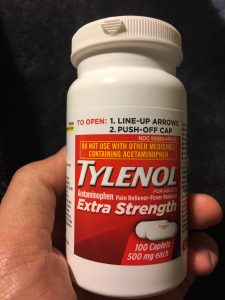1.2 Medication Trade and Generic Names
Brand and Generic Medication Names
All medications have generic names, and these are the same worldwide. They also have brand names, which can vary between parts of the world and are created by the companies that sell the medications. Brand names are often also referred to as trade names. The terms are used interchangeably. A generic medication can be sold under multiple brand names. Usually brand names are easier to pronounce and remember, which makes the medications easier to sell. Both generic and brand name drugs must have the same active ingredients, but the inactive ingredients might differ. This can become an issue if a patient has dietary restrictions or allergies. Generic and brand name drugs may differ in size, shape, and colour. Generic drugs are typically less expensive than brand name drugs (CADTH, 2022).
The Canadian drug reference is the Compendium of Pharmaceuticals and Specialties (CPS) and is the resource that all pharmacists and physicians use to reference medications. Nowadays, it is available through an online subscription as well as an app that can be downloaded and regularly updated. Previously, it was only available in paper format and, as such, was only updated annually. In the CPS, brand names are boldface or underlined and generic names are italicized.
Table 1.1. Brand and Generic Drug Names
| Brand Name | Generic Name |
| Benadryl | diphenhydramine |
| Gravol | dimenhydrinate |
| Motrin | ibuprofen |
| Tylenol | acetaminophen |
Although the table above lists just a few examples, typically the brand name is the more recognized name among the general population compared to the generic name, which is typically more complex and harder to remember.
What’s in a Name?
Generic drug names are the chemical names and are usually more difficult to pronounce. Brand names, on the other hand, are created by the drug companies that make their version of the generic drugs. Pharmaceutical companies do not have to follow any language rules when creating their drug names. Some drug names indicate the reason for use, such as Boniva, a drug for treating bone loss. The name might also indicate how often it should be given, as in Lithobid, which is given twice daily (“bid” is a medical abbreviation for “two time a day”), or the drug company may want to produce a positive feeling; for example, the name Viagra, a drug that treats erectile dysfunction, evokes a feeling of vitality. Once a name is created, it is reviewed by the Food and Drug Administration (FDA) (Pfizer, 2022).

Fig. 1.1 shows a package of the medication Lipitor (the brand name) and also shows the generic name, Atorvastatin calcium, on the label. The drug name was created to indicate that it is used to treat lipids, and in this case, it is used to lower “bad” (LDL) cholesterol. The label also indicates the dosage in each tablet (40 mg) and that the box contains 28 tablets.

Review
Attribution
Unless otherwise indicated, material on this page has been adapted from the following resource:
Ernstmeyer, K., & Christman, E. (Eds.). (2020). Nursing pharmacology. Chippewa Valley Technical College.. https://wtcs.pressbooks.pub/pharmacology/, licensed under CC BY 4.0
References
Canadian Agency for Drugs and Technologies in Health (CADTH). (2022). Similarities and differences between brand name and generic drugs. https://www.cadth.ca/similarities-and-differences-between-brand-name-and-generic-drugs
Pfizer. (2022). Part 2: What’s in a brand name? How drugs get their names. https://www.pfizer.com/news/articles/part_2_what_s_in_a_brand_name_how_drugs_get_their_names
Image Credits (images are listed in order of appearance)
Atorvastatin40mg by Panthro, CC BY-SA 3.0
Tylenol by Mrbeastmodeallday, CC BY-SA 4.0
standard drug names known worldwide
drug names that are created by drug companies; vary worldwide
a resource for referencing drug information

